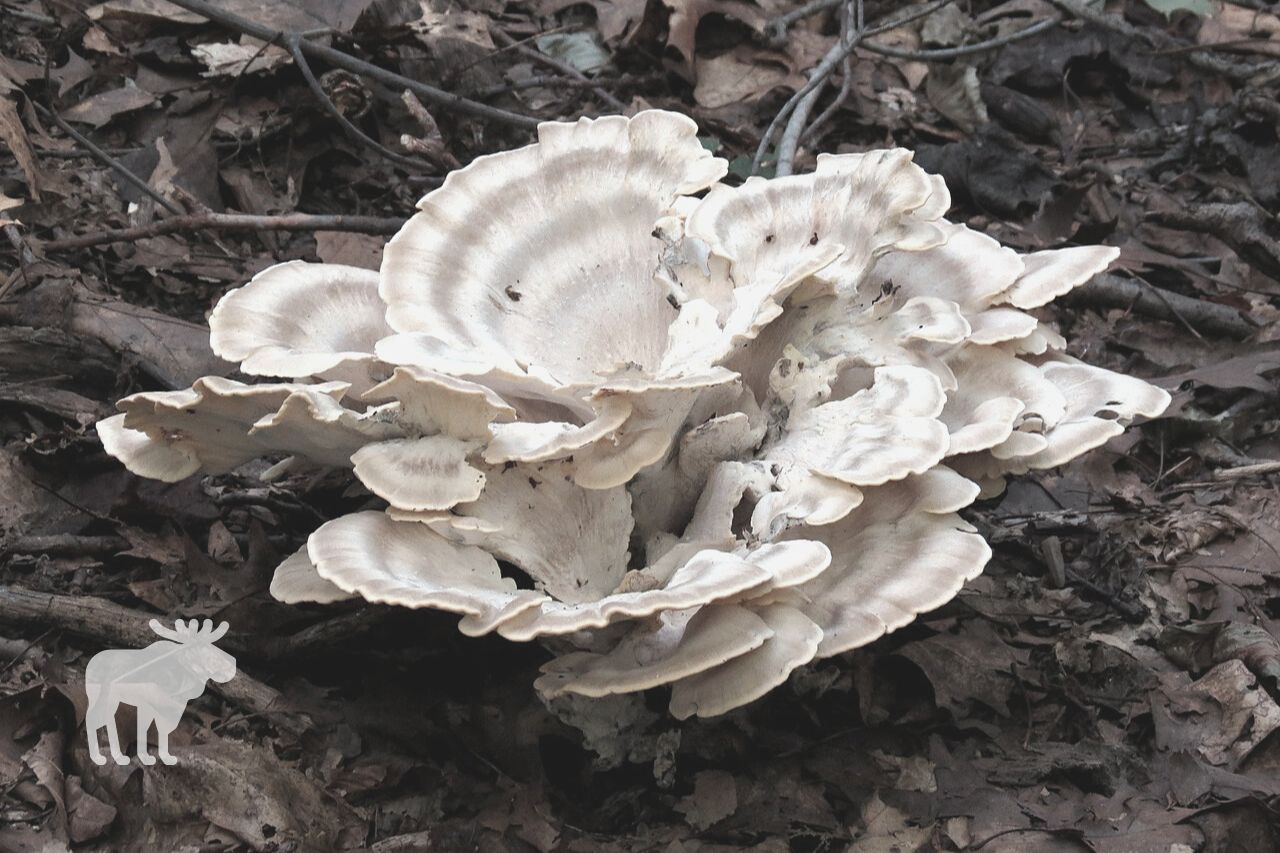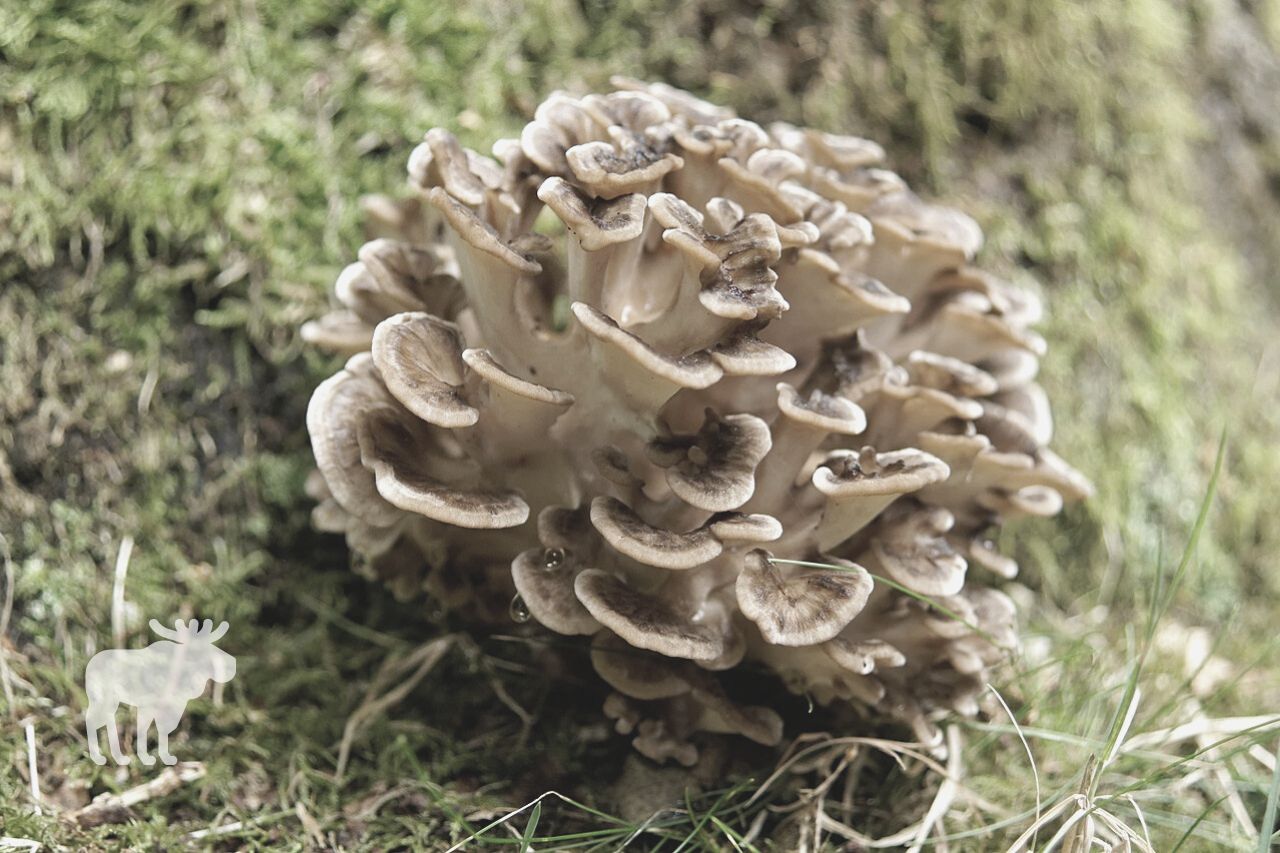If you’ve been mushroom hunting for any length of time, you know how tough it can be to correctly identify and differentiate between certain mushrooms. There are many look-alikes in the mushroom world. Today, we’re going to compare the black staining polypore vs. the hen of the woods, two edible varieties that are often confused for each other.
What You'll Learn Today
What is Black-Staining Polypore?

Black-staining polypore is a mushroom that grows in clusters from a communal base. It looks very similar to other types of polypore mushrooms, most notably the hen of the woods; the resemblance is so striking that some mushroom lovers have taken to calling black-staining polypore “rooster of the woods” as a joke.
This mushroom is native to North America and can be found commonly throughout the eastern parts of the United States. A closely related species can be found in Europe but has not been introduced to the U.S.
Black-staining polypore is so-named because it has a distinctive characteristic: it turns black, brown, or dark gray when touched or damaged. This feature can be used to help distinguish it not only from hen of the woods but from other lookalike mushrooms as well.
Black-staining polypore looks a little like a mass of gray or white clouds when it is young; as it grows, the caps flatten and become more fan-shaped. They are generally gray to white in color with gold or yellowish margins.
This mushroom tends to grow near the base of hardwood trees and is sometimes parasitic, as it can slowly kill living trees. It has a short, thick, off-center stem or base; the underside of the caps are smooth and gill-less, and the spore print is white.
Black-staining polypore fruits from mid summer to late fall; it is technically edible, though most people don’t like to eat it because it is tough and bitter tasting. It is unknown whether black-staining polypore has any medicinal benefits.
What is Hen of the Woods?

Hen of the woods is another type of mushroom cluster that grows from a single base. It is also considered a polypore mushroom because its spores are emitted from a smooth, gill-less underside.
Hen of the woods is found in North America, parts of Europe, and Japan. It is also commonly called by its Japanese name, Maitake, and its scientific name, Grifola frondosa.
Hen of the woods looks a lot like a fluffy gray chicken, hence the common name. Its caps are small, ruffled and feather-like, typically grayish-lavender in color.
Hen of the woods mushrooms can grow quite large; sometimes a single cluster can weigh as much as 50 pounds and measure three feet in diameter. Most clusters are smaller though, about 5 to 10 pounds and a foot in diameter.
Hen of the mushrooms are parasites that live off hardwood trees, both living and dead. They have fleshy, branching stems, the underside of the caps are smooth and grayish-white, and the spore print is white.
Hen of the woods fruits primarily in the fall and is a popular edible mushroom. It also has many purported health benefits, including diabetes management, supporting bone health and overall immunity, and reducing heart disease risk.
Black-Staining Polypore Vs. Hen of the Woods: Similarities and Differences
Similarities
- Type of mushroom: Both black-staining polypore and hen of the woods are polypore mushrooms. This means they release their spores from microscopic pores on the underside of their smooth caps instead of from gills.
- Growing season: Both types of mushrooms fruit primarily in the fall. Black-staining polypores may make their appearance shortly before hen of the woods and may stop fruiting sooner, but their growing season contains quite a bit of overlap.
- Edibility: Both types of mushrooms are edible. Though most mushroom hunters would agree that hen of the woods has a better taste and texture, you are not likely to experience any symptoms from mistakenly eating a black-staining polypore (unless you are allergic to it).
Differences
- Scientific names: Despite their closely similar appearance, black-staining polypore and hen of the woods belong to different mushroom families. Black-staining polypore is scientifically known as Meripilus sumstinei, while hen of the woods is known as Grifola frondosa.
- Health benefits: Hen of the woods is known for having a host of medicinal benefits, as discussed above. Black-staining polypore has never been studied for its medicinal benefits and is not currently believed to have any.
- Bruising: This is perhaps the most obvious physical difference between these two mushrooms. Hen of the woods does not bruise or discolor when touched or cut; on the other hand, black-staining polypore will develop black marks even when it is only lightly touched.
- Texture: Hen of the woods has a meaty, fleshy texture that many mushroom lovers find irresistible. Black-staining polypore has more of a tough, leathery, even woody texture, which is one reason it is rarely sought out for its food value.
- Colors: Hen of the woods generally has a mottled gray or grayish-lavender appearance. Meanwhile, black-staining polypore may appear light gray but is more often white to grayish-yellow in color.
Black-Staining Polypore Vs. Hen of the Woods: How to Distinguish Them
So, if you’re hunting for hen of the woods, how can you be sure you’re not getting black-staining polypore instead?
Here are some things you can check to verify the identity if you have questions about a mushroom cluster.
- Cap damage: Gently bruise or cut a corner of the mushroom’s cap. If it quickly discolors, you have found a black-staining polypore; if not, you have likely found a hen of the woods or another lookalike (none of which are poisonous).
- Cap shape: Hen of the woods caps look strikingly similar to gray chicken feathers; meanwhile, black-staining polypore caps have more of a rounded fan- or shell-shaped pattern.
- Toughness: If you break off a small piece of the mushroom, you will notice that hen of the woods has a softer, more fleshy feel, while black-staining polypore will feel more tough, like leather. This difference isn’t always noticeable in very young mushrooms or if you don’t have another mushroom to compare it with.
- Coloring: Hen of the woods mushrooms are generally darker gray than black-staining polypores, and they may have a slight lavender tint. Black-staining polypores will likely have a lighter gray to white color with a bit of yellow or gold around the cap margins.
- Size: Hen of the woods clusters can grow much larger than black-staining polypore clusters. That said, size alone should not be used as a determining factor, as hens of the woods are frequently about the same size as black-staining polypores.
Check out this video to learn more about the black-staining polypore, hen of the woods, and other mushroom lookalikes.
Conclusion
Black staining polypore mushrooms are frequently confused with other types of mushrooms, especially hen of the woods. Fortunately, both mushrooms are edible, and each has several distinctive features you can learn to help you tell them apart.
Great information. We think we found a black staining polypore in woods in Asheville, NC. Thank you.
Your first picture of “black staining polypore” is clearly Ischnoderma resinosum and your “hen of the woods” looks like turkey tail or a Stereum species. I urge you to take longer in your mycological journey before teaching others.
Good catch, thanks. Hopefully fixed now.
Thank you. We found quite a large colony growing in our yard on Cape Cod over ground where an oak stump was removed 2 years ago.
Your first 2 pics are incorrect. You shouldn’t be giving info to anyone, you need to learn how to ID mushrooms
Thanks, hopefully fixed now!
FYR
https://pubmed.ncbi.nlm.nih.gov/35993959/
Be very careful with polypore mushrooms if you are taking blood thinners for medicinal purposes. The polypores as a group contain many species that produce blood thinners, and in fact, these are related to their putative health benefits. If you were taking prescribed blood thinners and were to add any significant amount of chicken of the woods, or many other polypores, you could have a significant blood thinning and change of INR. Consult with your doctor about the safety of eating these or making tea from polypores!